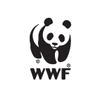White Rhinoceros
Although he is most known for his cat sculptures, Lewis has always explored a range of animal subjects. The first rhinoceros done by Lewis was a life-size black rhino that was commissioned in 1995 by the then Natal Parks Board for its centenary celebrations. It was the first time that Lewis sculpted on such a massive scale, and he so enjoyed the challenge that from then he began to conceive all of his work as large-scale. The first edition of the Centennial Rhinoceros was unveiled by then president Nelson Mandela and still stands in the Hluhluwe Umfolozi National Park in KwaZulu-Natal, where it was made. A series of 100 maquettes were also made to raise funds for conservation efforts in Kwa-Zulu Natal. (Over the years, Lewis has constantly sought ways to assist such organisations with their fundraising.)In 2000 Lewis returned to the theme of the rhino, this time, the white rhino, for much the same reason as he was drawn to the buffalo bulls. The subject was enormously large and bulky, and with its dusty, muddy appearance seemed to him the equivalent of landscape made flesh. Once again Lewis has used the compositional idea of merging the animal with the landscape, and the triangular shape of the base accentuates the forward thrust of the animal, increasing the dynamic energy of this piece.
The Braak
Roughly translated from the Dutch as “the fallowing” or “fallow field”,Die Braak is the centre of Stellenbosch and operates as a village green. The open stretch of grass was left unplanted and uncultivated in commemoration of a fire, leaving it available for military parades, festivals and sundry events. It is surrounded by a number of historic buildings, including the Kruithuis or the Vereenigde Oost-Indische Compagnie Powder House, Burgher House, The Church of St Mary and Coachman's Cottage.


